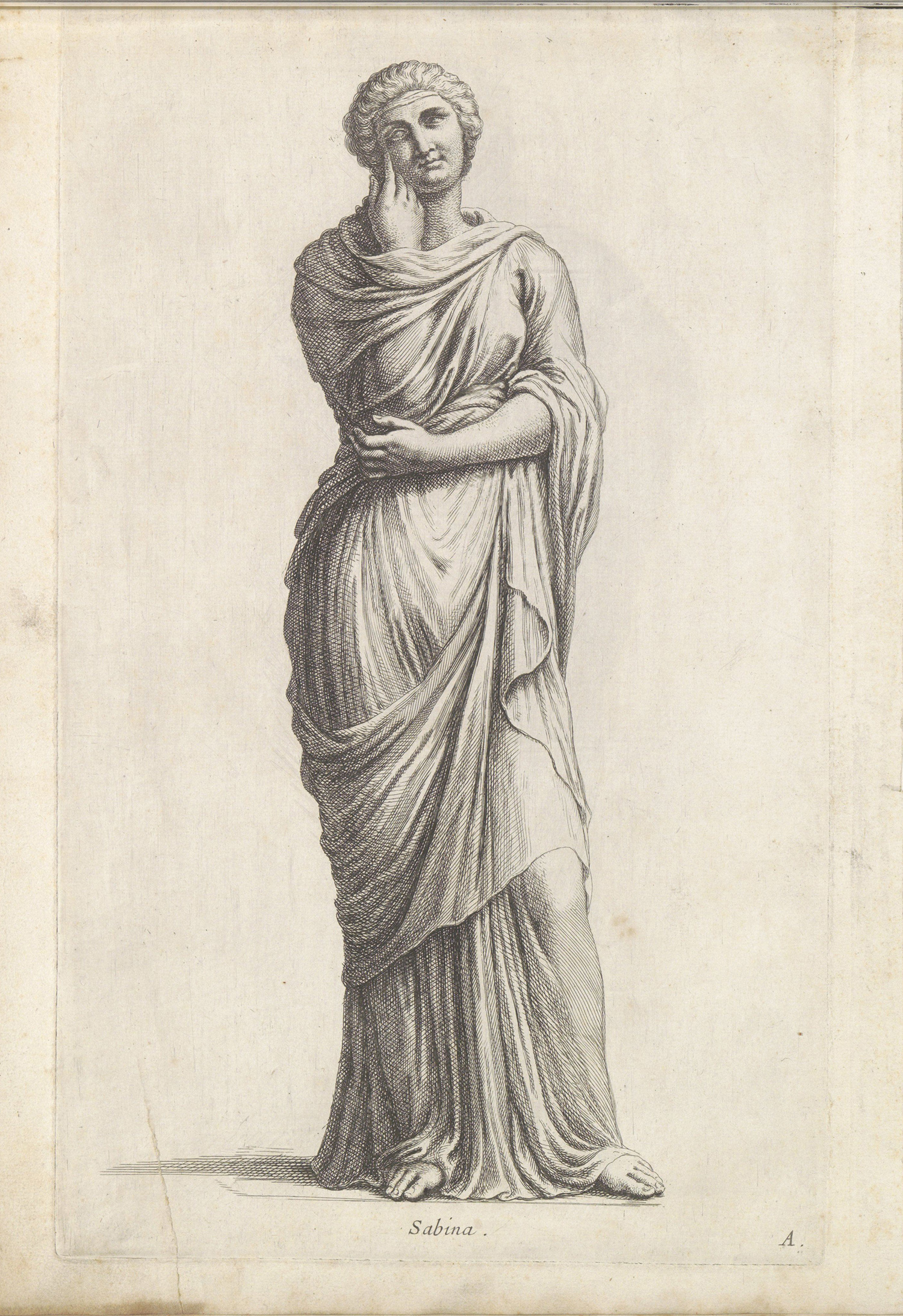Pudicitia
The representational scheme that School of Fontainebleau artists devised for Poppaea is more closely related to ancient Roman statues of Pudicitia. While the most famous Pudicitia is kept at the Vatican Museums (fig. 1), this antique model is known through many examples and was widely emulated in 16th- and 17th-century art (see the central figure in the Norton Simon’s The Holy Women at the Sepulchre by Peter Paul Rubens). Pudicitia statues personify the virtue of female sexual modesty, a central tenet of Roman ethics. The female figure in these statues is swathed in voluminous drapery that obfuscates her form. Her left arm protectively wraps around her torso as her right hand reaches up toward her face, demurely fingering the hem of her veil.
Although Poppaea’s distinctive hands in the School of Fontainebleau paintings are not identical to those of Pudicitia, the allusion must have been obvious to contemporaneous viewers. In a 17th-century print depicting an antique Pudicitia statue (fig. 2), the name “Sabina” is inscribed beneath the figure. This suggests that the two identities—Pudicitia and Poppaea Sabina—had, perhaps through the influence of the School of Fontainebleau’s paintings, been conflated.
Figure 1: Roman, Personification of Pudicitia, first century CE copy of a Hellenistic original, marble, Braccio Nuovo, Museo Chiaramonti, Vatican Museums, Vatican State © Vanni / Art Resource, NY
